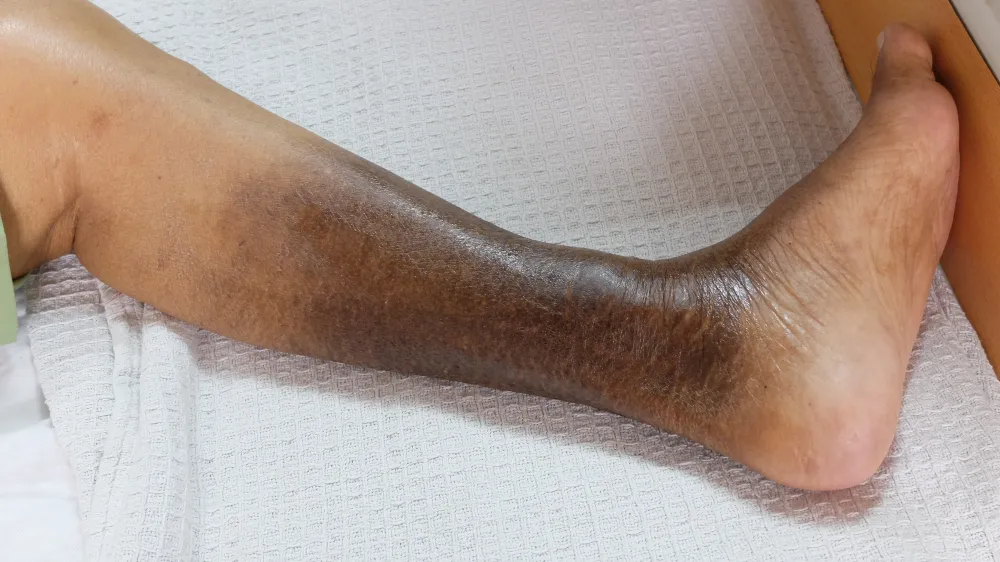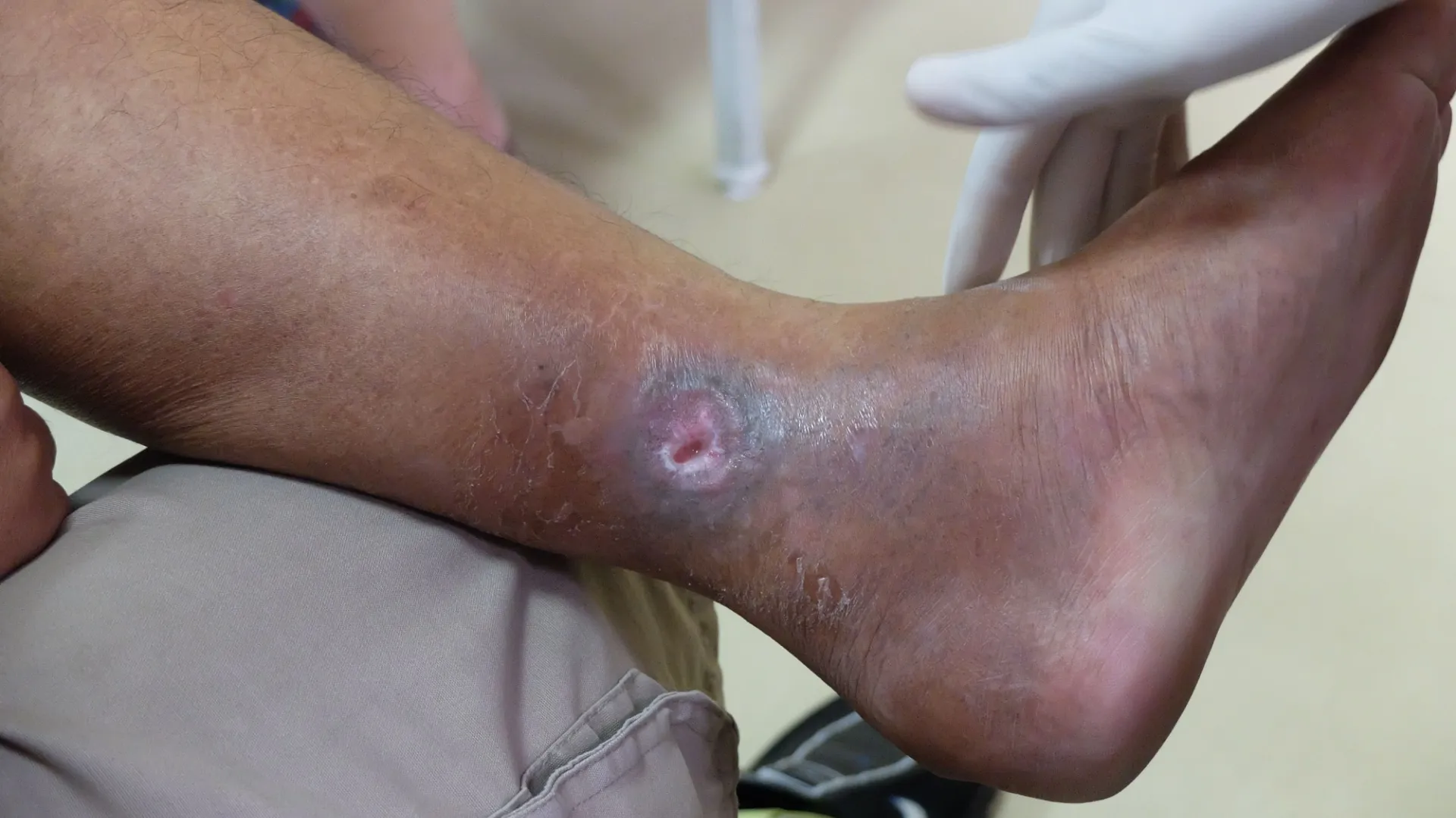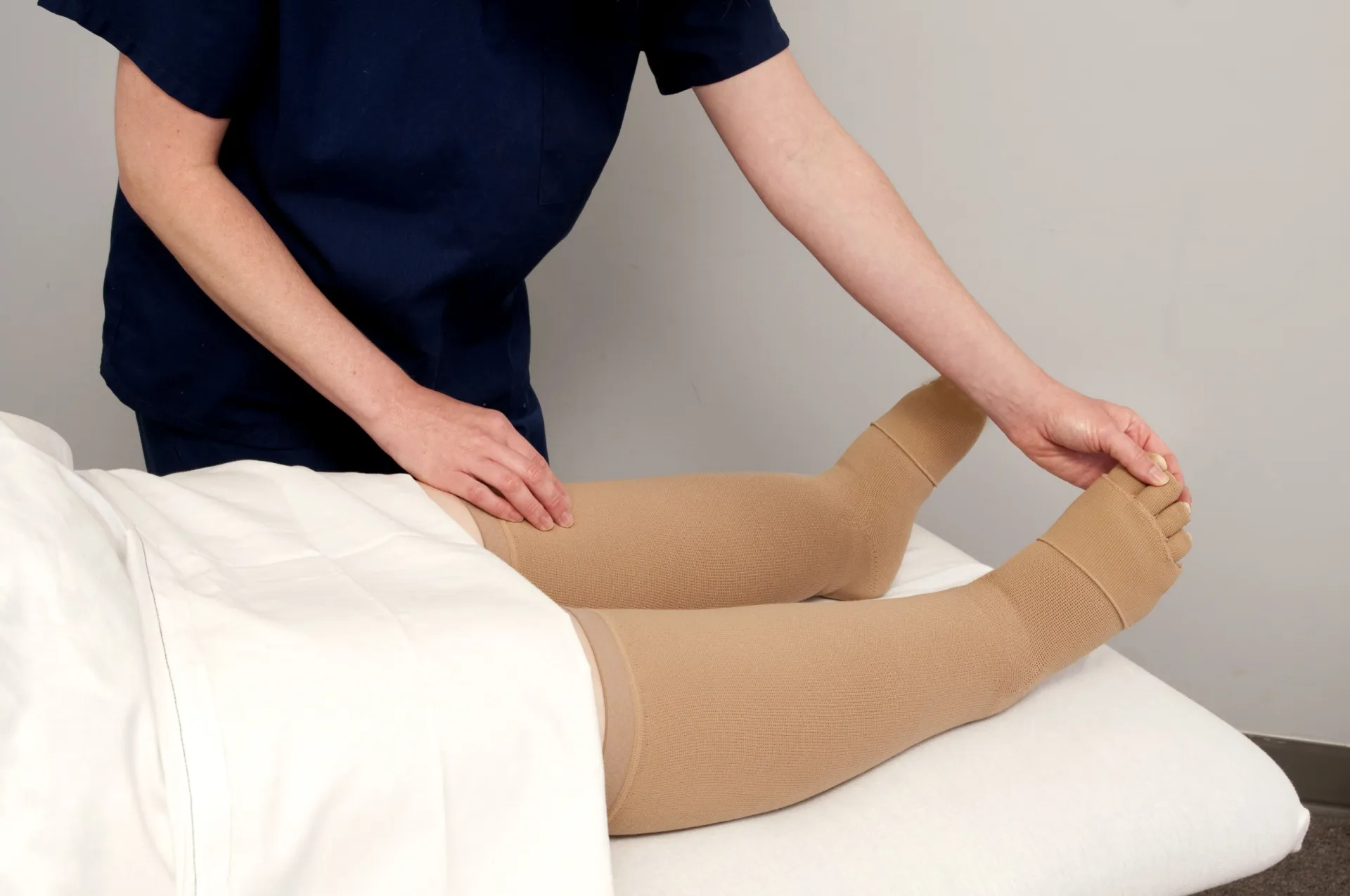Skin Discoloration, Itching & Ulcers

When the skin on your lower legs begins to change color, develops persistent itching or shows signs of breakdown, these symptoms often indicate advanced venous insufficiency that requires prompt medical attention. What may start as mild discoloration or occasional itching can progress to skin damage and skin ulcers that significantly impact your quality of life and mobility.
Dr. Louis Prevosti brings over 30 years of cardiovascular expertise to his Canton vein practice, where he focuses exclusively on diagnosing and treating vein disorders. His extensive experience treating tens of thousands of patients with venous conditions enables him to recognize the progression from early skin changes to ulcer formation and intervene effectively at any stage.

Understanding Venous Skin Changes
Chronic venous insufficiency affects more than just the veins themselves. When damaged valves allow blood to pool in the lower legs, the resulting increase in pressure leads to chronic inflammation that gradually has deleterious effects on the surrounding skin and subcutaneous tissue. This process, known as venous stasis dermatitis, develops over months to years and follows a predictable pattern that Dr. Prevosti recognizes through careful evaluation. Skin irritation, redness, itching, dryness and scarring can eventually lead to firmness and ulcer formation.
Skin discoloration can also develop from venous insufficiency. The constant pressure from pooled blood causes red blood cells to leak from the veins into the surrounding tissue. As these cells break down, they release iron deposits (hemosiderin) that can permanently stain the skin, creating the characteristic reddish brown or brown discoloration around the ankles and lower calves. This hemosiderin staining serves as a visible marker of underlying venous disease. There is really no other medical disorder or disease that causes this skin sign.

The Progression of Symptoms
Early Changes: Aching, Heaviness, Visible Veins and Leg Swelling
Initial skin changes of venous insufficiency may include an increasing amount of spider veins, the development of bulging varicose veins, and leg and ankle swelling. This may be accompanied by symptoms such as aching or night cramps. In some patients, there may be no visible signs or symptoms of venous disease, or the symptoms may develop so slowly and gradually that the patient does not realize them or thinks they are part of the normal aging process. However, age alone does not cause leg heaviness, tiredness or aching.
Advancing Symptoms: Skin Redness, Dryness, Itching, Discoloration and Hardening
Over time, venous insufficiency can produce more significant skin changes. Increasing skin irritation, redness, dryness and itching may develop. Patients sometimes report that the itching is worse in the evening or after showers. Sometimes the skin changes can be mistaken for a rash or eczema. These signs and symptoms are all due to the chronic inflammation caused by venous insufficiency.
Skin discoloration can also develop from venous insufficiency. The increased venous pressure causes small amounts of red blood cells to leak through the vein wall and into the tissue under the skin. When the body breaks down these red blood cells, some of the hemoglobin turns into hemosiderin. When hemosiderin attaches to the skin, it permanently stains the skin a brown color. This skin staining is called hyperpigmentation. It may be a light brown, a rust colored reddish brown or even a dark brown. The discoloration typically occurs around the ankle and lower calf. There is really no other medical disorder that causes this pattern of skin discoloration, so when it is present, it is very likely that an ultrasound examination will reveal venous insufficiency.
The skin texture can also change. The skin can become leathery, and the skin and subcutaneous tissue can become hard as normal tissue is replaced by fibrosis (scar tissue). This process is called lipodermatosclerosis. When the fibrosis completely replaces the skin cells, white patches can occur. This is called atrophie blanche and signifies severe, long-standing venous insufficiency. These skin changes occur near the ankle or the lower one-third of the calf.
Severe Stage: Ulcer Development
In some patients, the compromised skin eventually breaks down, forming venous stasis ulcers. As fibrotic tissue builds up in the skin and subcutaneous tissue, it interferes with oxygen and nutrient delivery to these tissues, resulting in loss of tissue. These open wounds typically develop near the inner or outer ankle, or just above the ankle, where venous pressure is highest. Without treatment, venous ulcers persist for weeks to months because the underlying circulation problem prevents normal healing. Skin breakdown of the lower leg and calf requires evaluation by a skilled vein specialist with experience treating venous ulcers.
Comprehensive Evaluation at Prevosti Vein Center
Dr. Prevosti's evaluation begins with a detailed examination of your skin changes and symptoms. Diagnostic ultrasound imaging is used to map the venous system and identify damaged veins. This precise imaging reveals the pattern and severity of venous insufficiency causing your skin problems.
The physical examination includes assessing skin temperature, texture, color changes and any areas of breakdown. Dr. Prevosti's decades of experience enable him to differentiate venous skin changes from other conditions such as arterial disease, diabetes and lymphedema that may appear similar but require different treatment approaches.
Treatment Approaches for Venous Skin Conditions
Successful treatment requires addressing the underlying venous insufficiency while managing the skin manifestations. Dr. Prevosti employs several minimally invasive techniques to eliminate the source of increased venous pressure:
- Radiofrequency ablation uses controlled thermal energy to seal malfunctioning veins, redirecting blood flow through healthy vessels and reducing the pressure that damages skin.
- Endovenous laser ablation achieves similar results using precise laser energy.
- Ultrasound-guided foam sclerotherapy treats smaller tributary veins contributing to skin changes, using specialized foam medication to close problematic vessels.
- Varithena® offers an injectable foam option for treating larger varicose veins that may be contributing to skin complications.
- VenaSeal™ uses a medical adhesive to permanently close damaged veins without heat energy.
For existing ulcers, Dr. Prevosti provides wound care alongside vein treatment. Unna boot application, treatment of any infectious cellulitis with antibiotics, compression therapy and careful monitoring promote healing while the underlying circulation issues are corrected. His approach addresses immediate wound management and long-term prevention through definitive vein treatment.


Preventing Progression and Recurrence
Early intervention helps prevent irreversible skin damage. Even with successful treatment, hemosiderin staining may persist, though other symptoms typically improve significantly. Dr. Prevosti emphasizes the importance of recognizing early warning signs (such as mild discoloration, redness, itching or skin warmth) and seeking evaluation before ulcers develop.
Following treatment, proper skin care and regular use of compression stockings can help maintain your results. Regular moisturizing prevents dryness and cracking that could lead to new ulcers. Dr. Prevosti provides guidance on protecting treated areas and recognizing any signs of recurrence.
Expert Care for Advanced Venous Conditions
Skin changes from venous disease can significantly impact your quality of life, causing discomfort, limiting mobility and affecting self-confidence. Dr. Prevosti's comprehensive approach and specialized expertise provide hope for patients who may have struggled with non-healing ulcers or progressive skin damage for months or years.
His pure focus on vein care, with in-office diagnostics and treatment, offers patients throughout Canton and North Georgia access to advanced care without the complexity of multiple specialists or facilities. Every aspect of your care, from initial evaluation through treatment and follow-up, happens under Dr. Prevosti's direct supervision.
If you notice skin discoloration, persistent itching or signs of ulcer formation on your lower legs, don't wait for symptoms to worsen. Contact Prevosti Vein Center to schedule your evaluation with Dr. Prevosti and discover how targeted vein treatment can heal your skin and restore your comfort.